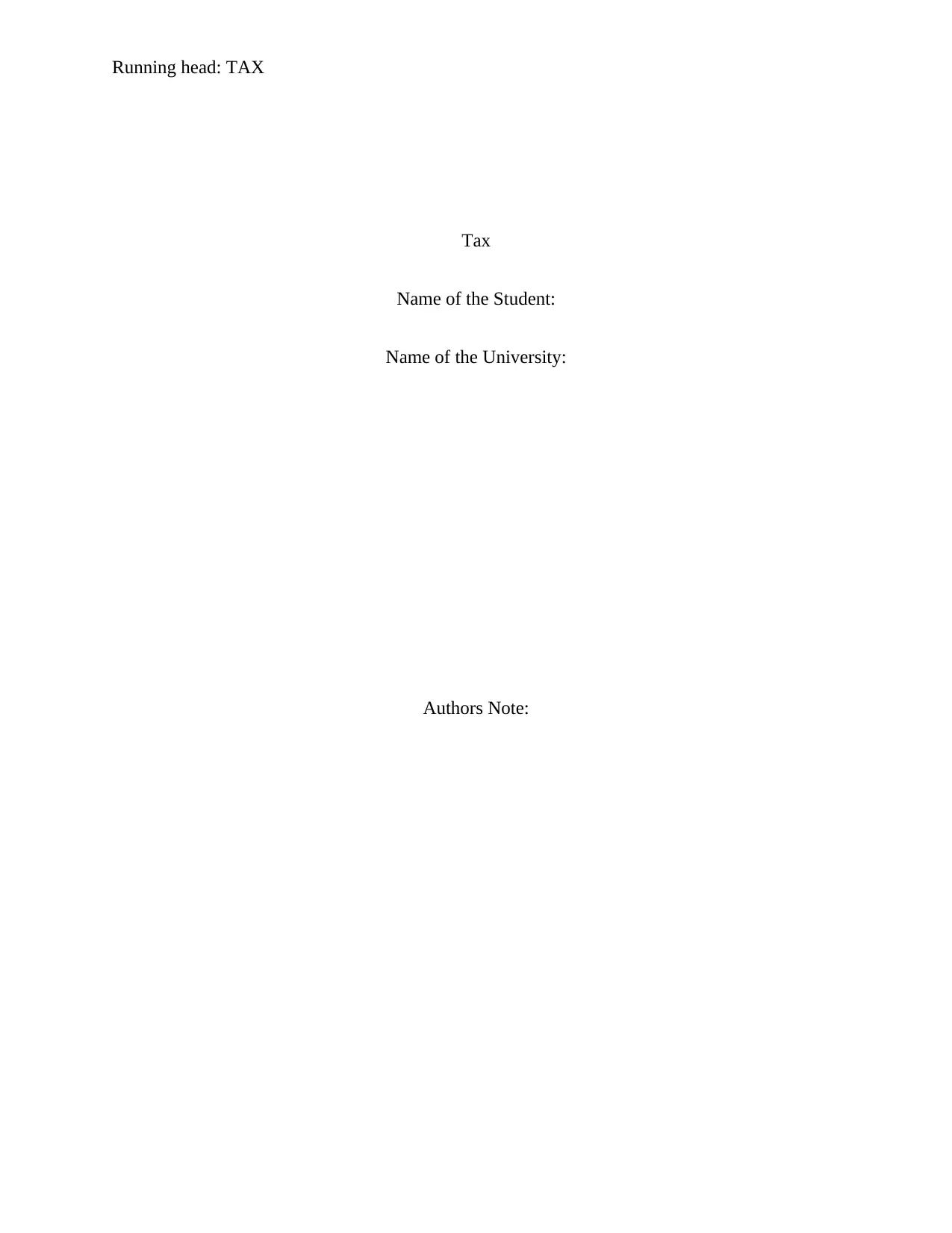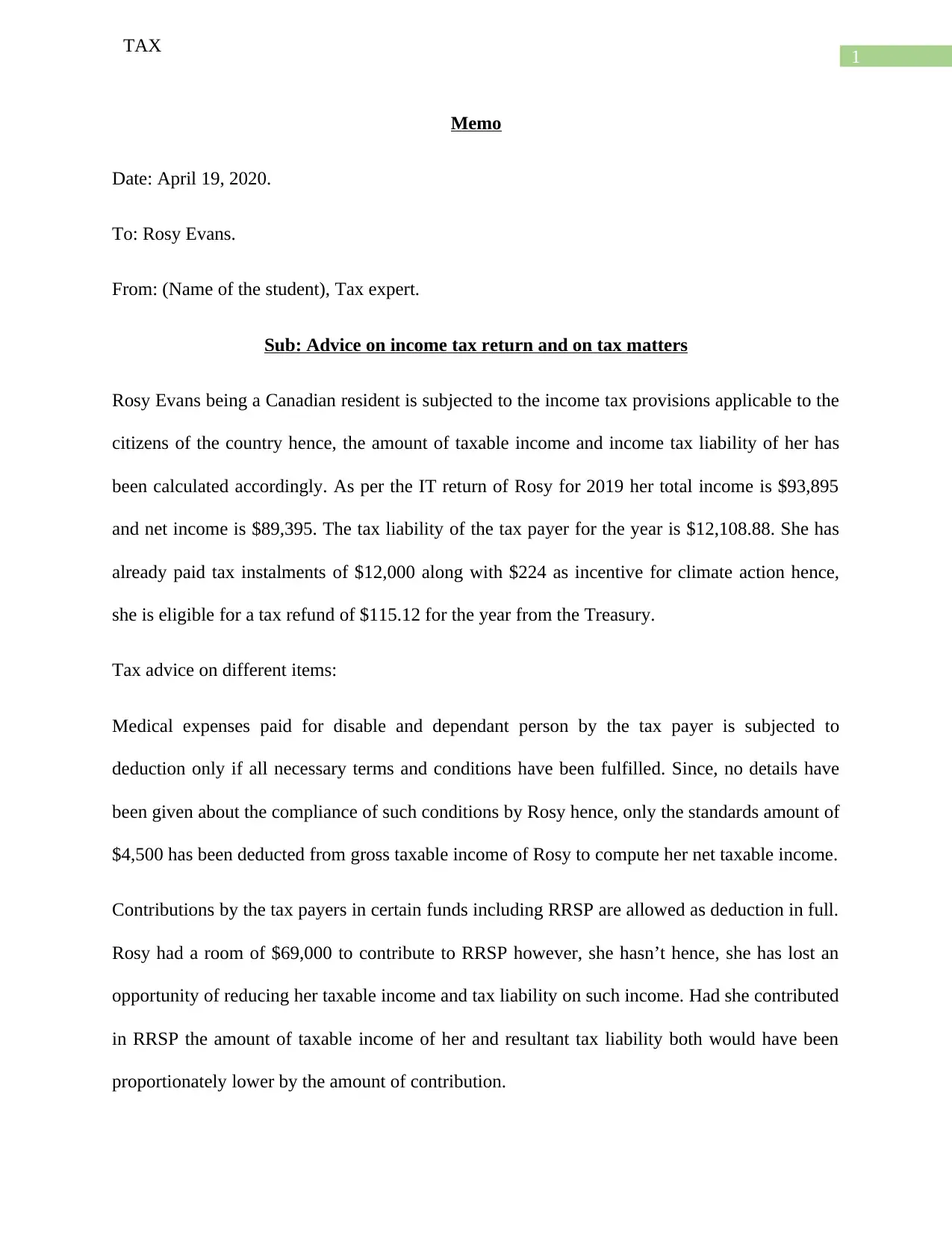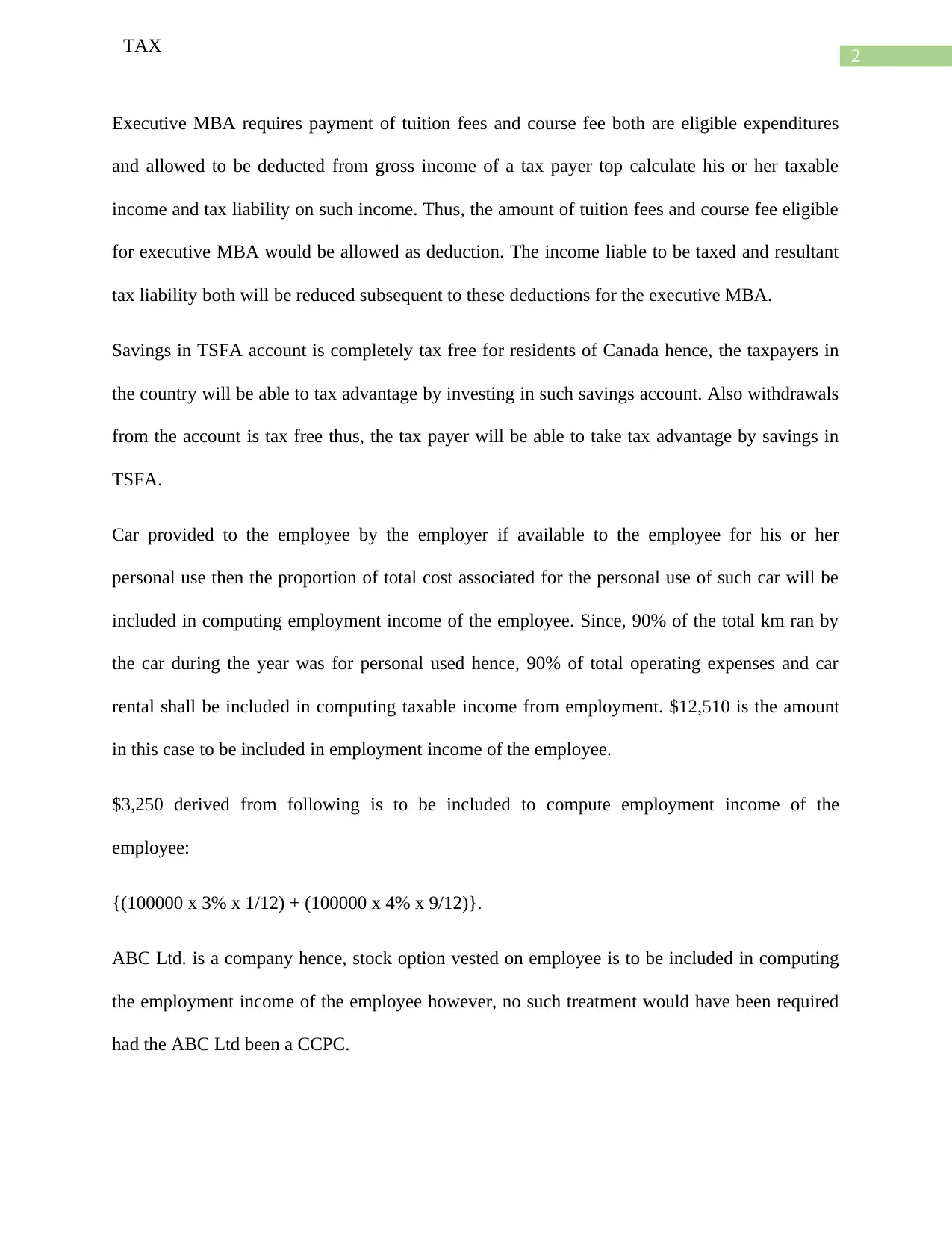Winter 2020 FIN 3020 Tax Project Analysis for Rosy Evans
VerifiedAdded on 2022/07/29
|4
|643
|23
Project
AI Summary
This document presents a tax project analyzing the tax situation of Rosy Evans, a Canadian resident. The analysis includes a calculation of her total income, net income, and tax liability for 2019, along with a determination of her eligibility for a tax refund. The project offers detailed advice on various tax matters, such as medical expenses, RRSP contributions, executive MBA expenses, and the tax implications of TFSA savings. It also covers employment income calculations, including car benefits and stock options. Furthermore, the project addresses Rosy's rental income from a six-plex property, detailing rental income and related expenses such as hydro, water, mortgage interest, property taxes, and maintenance. The analysis provides a comprehensive overview of her tax situation and offers valuable insights into optimizing her tax return.
1 out of 4











![[object Object]](/_next/static/media/star-bottom.7253800d.svg)